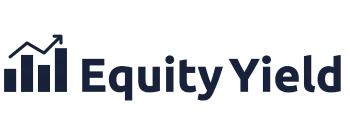2023 has been a difficult year to find new real estate investments, and the market is struggling to reach price discovery amongst rapidly changing market conditions.
Many investors remain on the sidelines, waiting until prices reduce further so that yields start to make more sense in the context of the rising risk-free rate. However, trying to time the real estate market can be a fraught strategy given the illiquidity and slow-moving transactions inherit in real estate.
I do think that now is the time to look very closely at market conditions and asset values and do some critical thinking around how we define and identify real estate investment opportunities going forward. With fewer active buyers, now could be the time to find some great deals, as long as we can correctly identify value.
Debt has a major impact on values
There is no argument that higher interest rates, and more restrictive capital markets have the most material impact on asset values, and while I do not believe that interest rates will drop aggressively anytime in the near future, I do believe we are closer to the top of the rate cycle than we are to the bottom.
There is a widely recognized 18-month lag from the implementation of quantitative tightening to the time that its impact can be seen broadly in the economy and on asset values. However, traditionally leveraged assets, such as commercial real estate, tend to price in these rate hikes much more quickly than the broader investment market.
With this in mind, 2024 may be the time to start looking for opportunities that others may be overlooking.
Evaluating investments in the current environment
As we are searching for new investments, we are focusing our attention on where each market is in the current real estate cycle. Remember that real estate is hyper-local, and while one market may be in hyper-supply, another market may be in recovery or expansion.
We want to understand exactly what supply is coming through the pipeline, to get a sense of the impact on rent growth (or lack thereof) over the next few years. Many of the best markets over the last few years currently have an excess of supply coming to the market and this will put a real dampener on the ability to achieve rent growth and maintain high occupancy in the short term.
The whole problem with setting a price today is that no-one is sure whether they are getting enough of a discount. However, if we can find a market that has a realistic chance of achieving rent growth over the next few years, we will have more confidence in the potential growth story and we will be able to assign more value to the asset and commit to paying a higher price.
Next, we need to create sufficient runway in our business plan to allow the debt cycle to progress, for interest rates to start to reduce, and to allow asset values to recover. No-one knows exactly how long this will take. However, whereas we were previously underwriting for 5-year business plans, we are now more likely to underwrite for a 6- or 7-year business plan, to ensure that we build in adequate time for interest rates, and cap rates, to recover.
Finding a realistic exit cap rate is a real challenge as well. Whereas in the past many relied on a 10bps or 20bps cap rate escalator per year of hold, that assumption can be too crude in a market where cap rates have expanded 100bps to 150bps in the last year. Given that we are pitching a longer-term business plan that will ideally provide enough time for the market to normalize, we want to project a range of realistic exit cap rate outcomes – this means that we are not relying on a single metric, and we want to ensure that the range of projected outcomes are reasonable. We also project exit cap rates based on a margin over treasuries. If treasuries are expected to stabilize and reduce over the next 5+ years, then we would expect cap rates to follow suit as well.
Of course, we need to understand the impact of leverage on the purchase. A major challenge that we face is that treasury yields have become very volatile, and this makes it incredibly difficult to underwrite debt and be confident about debt service costs and loan proceeds. To overcome this challenge, we will include a healthy buffer in our interest rate assumptions. We will also often include financing contingencies in our offer, to ensure that we can adjust pricing if the debt market moves materially throughout the closing period.
In aggregate, many of these more conservative assumptions may mean that our price is well below seller expectations. However, in an environment where there are far fewer active buyers, sometimes the seller may have no alternative offers from qualified buyers. Opportunities will be coming and as long as we remain true to our criteria and our standards, we expect to be able to find some great buying opportunities in 2024.
To learn more about how we can help you to generate superior investment results through professionally managed Real Estate investments, click here to register for our investor club.
